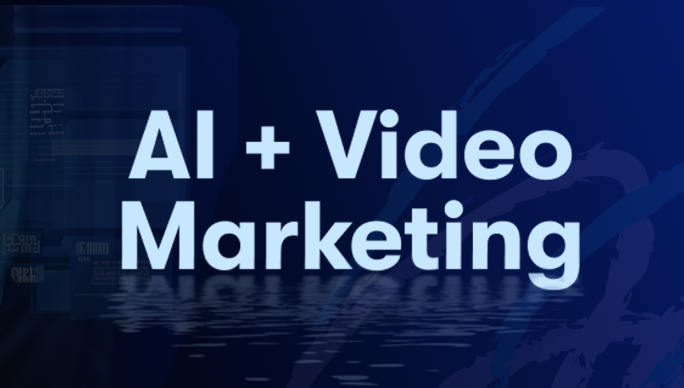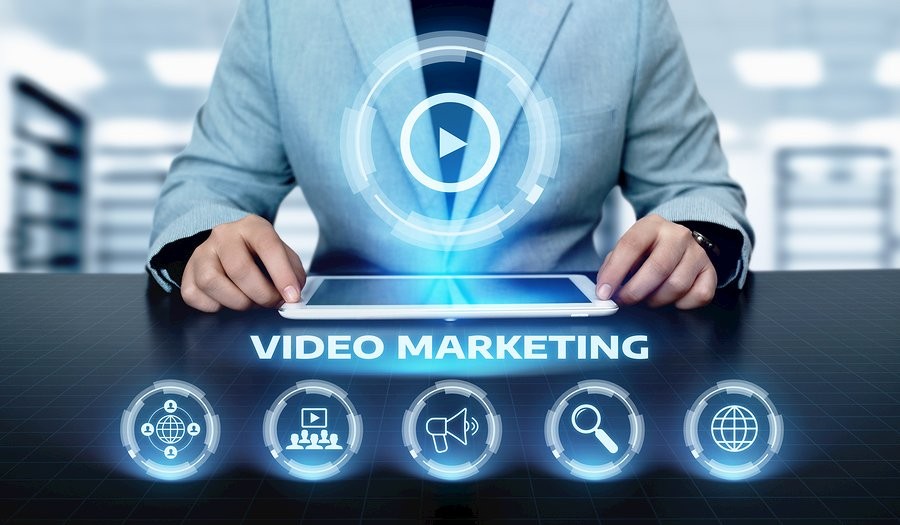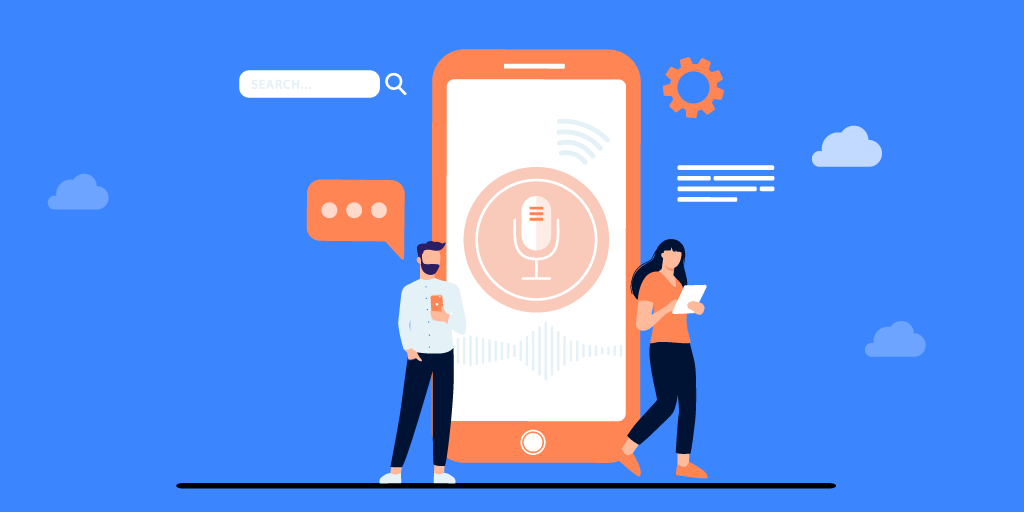How AI is Shaking Up Digital Marketing Campaigns

AI is no longer a futuristic concept; it’s a tool that businesses are already using to enhance their digital marketing strategies. Whether you’re running a small startup or a large company, AI tools can help streamline your marketing efforts, boost efficiency, and deliver better results. You may have already noticed AI at work without even realizing it—recommendation engines on e-commerce sites, chatbots on customer service pages, or targeted ads that seem eerily perfect. But how exactly is AI transforming the way marketers create and manage their campaigns? Let’s dive into the world of AI and its game-changing impact on digital marketing.
Smarter Audience Targeting with AI

One of the most significant ways AI is revolutionizing digital marketing is through smarter audience targeting. In the past, targeting potential customers involved broad strokes—think age, location, or gender. But AI tools allow you to go beyond the basics by analyzing behavior, preferences, and even online habits. Imagine knowing exactly which users are more likely to click on an ad or buy a product. AI-powered tools like machine learning algorithms help you gather this data and build profiles that let you personalize your campaigns to a whole new level. It’s like having a crystal ball that helps you predict what your customers want before they even know it.
For example, if a user frequently shops for fitness gear and follows workout influencers, AI tools can help you show them ads for gym memberships or fitness supplements at the right time. With such precise targeting, you’ll not only get more clicks but also higher-quality leads—people who are genuinely interested in your product. The days of wasting ad spend on uninterested audiences are numbered.
Personalization at Scale: AI Makes It Easy

You’ve probably heard the phrase “personalization is key” a million times. But with AI, personalization isn’t just a buzzword; it’s something you can easily achieve at scale. Gone are the days when you had to manually segment audiences or write hundreds of personalized emails one by one. AI can analyze vast amounts of data and automatically adjust your content to fit individual users’ needs and interests.
Picture this: you’re running an email marketing campaign for an online clothing store. With AI-driven tools, you can send personalized emails to thousands of customers, each featuring different product recommendations based on their shopping history. Someone who buys casual wear may receive suggestions for comfy sweaters, while another customer who prefers business attire could get deals on blazers. This level of personalization is not only efficient but also makes your customers feel like you’re paying attention to their preferences. And let’s be honest, who doesn’t love feeling special?
AI can also handle dynamic content on websites and ads. If a user is scrolling through your site, AI can automatically display content or products that are relevant to them based on their previous activity. This means each visitor has a unique and personalized experience, boosting engagement and increasing the chances of conversion.
Predictive Analytics: The Power to Forecast Campaign Performance

One of the coolest things about AI in digital marketing is its ability to predict campaign outcomes before they even happen. That’s right—AI gives you the power to look into the future. By analyzing historical data and customer behavior patterns, AI tools can forecast how well a campaign is likely to perform. This is called predictive analytics, and it’s a game-changer for marketers.
Imagine planning a social media ad campaign. Instead of guessing which ad copy or visuals will resonate with your audience, AI tools can analyze past campaigns and recommend the best-performing elements. They can even estimate metrics like click-through rates, conversion rates, and ROI, so you have a clear idea of what to expect. Not only does this save you time, but it also minimizes the risk of launching a campaign that flops.
Predictive analytics can also help you optimize campaigns in real time. Let’s say you’re running an ad and notice it’s not performing as expected. AI tools can suggest tweaks—like adjusting the audience, budget, or content—that could improve performance on the fly. It’s like having a personal marketing coach that’s always one step ahead.
AI-Driven Chatbots: Customer Support and Lead Generation

You’ve probably interacted with a chatbot at some point—whether it was on a website or through social media. Chatbots are one of the most popular AI applications in digital marketing, and for good reason. They can handle everything from customer inquiries to lead generation, all while providing a seamless user experience.
With AI-driven chatbots, you can offer 24/7 customer support without hiring a large team. These bots can answer frequently asked questions, help users navigate your site, or even guide them through the purchase process. But chatbots aren’t just limited to customer service. They can also act as lead generators, engaging visitors in real-time and collecting their contact details for future marketing efforts. Some advanced chatbots can even analyze a user’s responses to offer personalized product suggestions, boosting the likelihood of a sale.
The beauty of chatbots is that they can handle multiple interactions simultaneously, making them scalable and efficient. Plus, users don’t have to wait around for responses, making the experience faster and more satisfying. AI chatbots are truly a win-win for both businesses and customers.
The Rise of Short-Form Videos: Snackable Content That’s Here to Stay

Short-form videos have quickly become the darling of digital marketing. You’ve probably seen them everywhere—on TikTok, Instagram Reels, and even YouTube Shorts. These bite-sized videos, usually lasting under 60 seconds, are taking over the internet, and it’s easy to see why. They’re quick, engaging, and perfect for our fast-paced, mobile-first world. Short-form videos are like the fast food of content; they’re easy to consume and can be enjoyed anytime, anywhere.
Why are they so effective? Well, you know how attention spans are shrinking. Most people don’t have the patience to sit through a 10-minute video, especially when they’re scrolling through social media. Short-form videos deliver the message fast, often with a punchline, catchy tune, or quick how-to that grabs attention immediately. It’s all about instant gratification. Plus, these videos are super shareable, which helps you reach a wider audience without even trying. You can hop on trends, use popular sounds, or create quick tutorials to keep your brand relevant and in the spotlight.
For brands, the beauty of short-form video is that it doesn’t require a big budget or fancy equipment. You can shoot a compelling video with just your smartphone and a little creativity. Whether it’s behind-the-scenes clips, product demos, or user-generated content, short-form videos allow you to humanize your brand and connect with your audience in an authentic way. The key is to keep it fun, light, and engaging.
Live Streaming: Real-Time Engagement That Builds Trust

If short-form videos are the appetizers, live streaming is the main course. In recent years, live streaming has become one of the most powerful tools in a marketer’s arsenal. You’ve probably noticed brands, influencers, and even your favorite stores going live on social media platforms like Instagram, Facebook, and YouTube. Live streams are exciting because they create a sense of urgency and authenticity—you get to see things as they happen, with no filters or edits.
For your business, going live offers a unique way to engage with your audience in real time. You can answer questions, showcase products, or even launch new services during a live session. The interactivity of live streaming makes it a two-way street; you’re not just talking at your audience, you’re having a conversation with them. It’s an excellent way to build trust because viewers feel like they’re part of something exclusive and unscripted. Plus, live streams can be repurposed later into shorter clips, giving you double the content with half the effort.
The beauty of live streaming is that it works for all kinds of industries. Whether you’re a beauty brand doing a live tutorial, a SaaS company hosting a Q&A session, or a fitness instructor running a live workout class, live streaming adds a layer of connection and immediacy that pre-recorded videos just can’t match. And with features like comments, reactions, and polls, you can engage your audience in real time, making them feel seen and heard.
Video Marketing + AI: A Match Made in Heaven

You might wonder, where does AI come into play with video marketing? Well, AI is quietly working behind the scenes to make your video campaigns more effective than ever. AI-powered tools are revolutionizing video marketing by automating the editing process, analyzing viewer behavior, and even helping you create content ideas. AI can suggest the best times to post your videos, recommend trending topics, and even help you optimize your videos for SEO. It’s like having a digital assistant who knows exactly what your audience wants to see.
One of the coolest AI applications is in video editing. Tools like Adobe Sensei and Magisto use AI to automatically edit your video footage, picking out the best scenes, adding transitions, and even suggesting background music. This means you can create professional-looking videos without spending hours in the editing room. AI can also generate captions, translations, and even voice-overs, making your videos more accessible to a global audience.
But the magic doesn’t stop there. AI can analyze how viewers are interacting with your videos—are they dropping off after 10 seconds? Are they rewatching certain parts? This kind of insight is invaluable for improving future content. AI can also help you personalize your video marketing at scale. Imagine being able to send a slightly different version of the same video to different segments of your audience based on their behavior or preferences. With AI, you can.
The Future of Video Marketing: What’s Next?

It’s safe to say that video marketing isn’t going anywhere, and the future looks even brighter. With advancements in AI and new platforms emerging, video content will only become more personalized, engaging, and interactive. Features like shoppable videos, 360-degree videos, and augmented reality (AR) experiences are already making waves, allowing viewers to interact with content in more immersive ways.
For marketers, this means endless possibilities for connecting with your audience in ways that feel fresh and exciting. You can blend short-form videos with live streaming to create hybrid experiences—like live product demos followed by quick, shareable clips. You can use AI to craft smarter campaigns, fine-tune your strategies, and deliver exactly what your audience craves.
In a world where attention is the ultimate currency, video marketing—especially short-form videos and live streaming—offers a direct, engaging way to capture it. With the help of AI, you can take your video marketing efforts to the next level, making your campaigns not only more effective but also more personalized and relevant.
Data Privacy and User Trust: Navigating the New Digital Marketing Era

In today’s digital world, user trust has become more crucial than ever. With data privacy regulations tightening globally, marketers like you are having to rethink the way they approach campaigns. It’s not just about getting people to click on ads anymore—your audience now wants to know how their personal information is being used. Whether it’s the GDPR in Europe or the evolving data protection laws in Nigeria, these regulations are reshaping the way brands handle data and connect with their customers.
Data privacy laws are being implemented to protect users’ personal information from misuse, ensuring that brands follow ethical practices when collecting and processing data. For you, this means being transparent with how you collect, store, and use customer information. It also means creating marketing campaigns that prioritize the consumer’s trust while staying compliant with these regulations. While this may seem like a challenge, it’s also a golden opportunity to strengthen your relationship with your audience.
Why Transparency is the New Currency in Digital Marketing

Consumers today are more informed than ever, and they value transparency. You can’t just collect data and hope no one notices. Customers want to know what data you’re gathering, why you’re gathering it, and what you’re doing with it. Being upfront about your data practices builds trust, which is critical for long-term customer loyalty.
Imagine you’re running an email marketing campaign—an essential tool for reaching potential clients. With the rise of data privacy regulations, you’ll need explicit consent from users before adding them to your email list. This simple action shows respect for their privacy and creates a sense of trust. Plus, when customers feel like they’re in control of their data, they’re more likely to engage with your content.
Incorporating clear privacy policies and consent forms in your marketing strategy will not only protect you from legal penalties but also create a more open relationship with your audience. When people feel safe interacting with your brand, they are more likely to trust your messaging and share their information voluntarily, creating better leads and conversions.
Changing the Game: Personalization Without Compromising Privacy

Personalization has been a cornerstone of effective digital marketing. We all love it when a brand “gets” us, right? However, with stricter regulations, you must be more mindful of how you personalize marketing campaigns. The days of aggressive data collection are over. Now, it’s about finding that sweet spot between respecting privacy and delivering personalized content that speaks to your audience.
One of the ways you can maintain effective personalization while respecting privacy is through zero-party data. This is the data that your audience willingly provides, like answering a poll or filling out a survey. It’s data that users actively choose to share with you, meaning there’s no violation of privacy. This gives you valuable insights into your customers while keeping trust intact.
You can also leverage AI-powered tools to enhance personalization without overstepping privacy boundaries. For example, AI can analyze customer behavior patterns without collecting personal details, helping you create targeted content based on group behaviors rather than individual data. This approach respects user privacy while still giving you the tools to craft relevant campaigns.
The Impact of Evolving Regulations on Marketing Strategies

Data privacy laws are constantly evolving, and this has a direct impact on how you plan your marketing strategies. Take the General Data Protection Regulation (GDPR) for instance—it completely changed how businesses operate in Europe, and its effects are being felt worldwide. Even though you might not be based in Europe, if you’re dealing with customers from that region, you have to comply. And, it’s not just Europe; other regions, like Nigeria, are also ramping up their data protection laws with regulations like NDPR (Nigeria Data Protection Regulation).
For digital marketers, this means having to adapt. Gone are the days of collecting vast amounts of data without worrying about the consequences. Today, every marketing strategy has to consider legal compliance, from how you handle customer emails to how you track user behavior on your website. You’ll need to stay updated with changes in these laws and continuously refine your marketing tactics to align with new requirements.
For example, cookie consent banners are now a common sight on websites. These are not just there for show—you need to get actual consent before tracking a user’s online activities. And that’s just one of the ways regulations are impacting day-to-day marketing practices. However, far from being a burden, these regulations can push you toward more ethical marketing practices, which can improve your brand’s reputation and foster deeper connections with your audience.
The Impact of Voice Search: What Businesses Need to Know

Voice search is no longer just a futuristic technology; it’s becoming a big part of how people search the internet today. Whether it’s asking Siri for directions or telling Alexa to play your favorite song, voice search is changing the way users interact with technology—and this means your business needs to adapt. If you’ve been focusing solely on traditional SEO strategies, it might be time to add voice search optimization to your marketing playbook. It’s all about making sure that when someone asks a virtual assistant a question, your business is the answer they hear.
Voice search optimization is all about capturing those conversational queries. When people use voice search, they tend to ask questions in a more natural, human way than they do when typing. For example, instead of typing “best pizza Lagos,” a user might ask, “Where can I find the best pizza in Lagos?” As a business, you need to anticipate these types of questions and ensure your content is optimized to provide clear, direct answers.
Why Voice Search is Gaining Popularity

The rise of smart devices and virtual assistants has made voice search more accessible and convenient. We’ve all been there—hands full, rushing around, and needing quick information. Instead of typing, you simply ask your phone or smart speaker for what you need. Voice search is quicker, and for many people, easier than typing.
In fact, voice search is particularly popular with mobile users. It’s perfect for when you’re on the go, which is one reason why optimizing your content for mobile is essential. If your website isn’t mobile-friendly, chances are your business won’t even show up in voice search results. So, ensuring that your site is fast, responsive, and easy to navigate is a crucial first step in embracing voice search.
Optimizing for Voice Search: Key Strategies

To optimize your business for voice search, focus on conversational content. Users ask virtual assistants questions in full sentences, which means you need to use more natural language in your content. Start by creating a frequently asked questions (FAQ) section on your website. FAQs naturally answer common questions users might voice search. For example, if you run a restaurant, an FAQ question might be, “What’s the best time to visit your restaurant?”
Another key to voice search optimization is using long-tail keywords. These are longer, more specific keyword phrases that match how users ask questions through voice search. Instead of targeting short keywords like “pizza Lagos,” consider optimizing for longer phrases like “Where can I find good pizza in Lagos?” Tailoring your content for these long-tail keywords will improve your chances of appearing in voice search results.
Lastly, aim to provide concise, informative answers. Voice search typically delivers a single, spoken response, so make sure your content is clear and to the point. If you’re providing direct answers to common questions, your business stands a better chance of being the top result.
How AI is Revolutionizing Voice Search Campaigns

The increasing use of AI in digital marketing is reshaping how businesses approach voice search. AI-powered tools help you analyze voice search data and identify patterns in how users ask questions. This information is invaluable because it allows you to tweak your content to match those patterns.
Artificial intelligence is also playing a big role in personalizing voice search experiences. Virtual assistants like Google Assistant and Alexa are learning more about individual user preferences every day. This means businesses can get more specific with how they target voice search users. For instance, if a user frequently searches for healthy food options in their area, AI can help your restaurant show up as a top result for queries like “Where can I find vegan pizza?”
By leveraging AI-driven insights, you can ensure that your voice search optimization strategy is data-backed and highly targeted, giving your business an edge in this evolving space.
The Connection Between Voice Search and Short-Form Videos

You might be wondering how voice search ties into other digital marketing trends, like short-form videos and live streaming. Interestingly, voice search often leads users to video content. For example, someone might ask, “How do I bake a chocolate cake?” and be directed to a YouTube video rather than a written blog post.
This means that businesses creating short-form videos that directly answer user questions are more likely to capture voice search traffic. If your business hasn’t yet ventured into video marketing, this is a great reason to start. By producing short, informative videos that align with common voice search queries, you can increase your visibility in both search engines and video platforms.
Conclusion: Embrace the Future of Digital Marketing in 2024
As we look ahead to 2024, it’s clear that digital marketing is at a pivotal juncture, driven by innovation and evolving consumer expectations. The trends shaping this landscape—AI advancements, the dominance of video marketing, data privacy considerations, and the rise of voice search—are not just passing fads; they represent the future of how brands connect with their audiences.
AI is redefining what’s possible in marketing, making campaigns smarter and more efficient. It empowers marketers to target audiences with unprecedented precision and to deliver personalized experiences that resonate deeply. If you haven’t integrated AI into your strategy yet, there’s no better time to start. Embrace these tools and let them work for you, enhancing your campaigns and boosting your results.
Video marketing, with its ability to capture attention and build trust, continues to dominate. Short-form videos and live streams are your ticket to engaging your audience in real-time. So get creative, go live, and let the power of video take your marketing strategy to new heights. Your audience is eager for fresh, engaging content, and they’re waiting for you to deliver it.
At the same time, navigating the complexities of data privacy is essential for any marketer. Striking the right balance between innovation and trust will set you apart in a crowded marketplace. Be transparent with your data practices, respect user privacy, and you will cultivate stronger, lasting relationships with your audience. Remember, in this age of heightened data awareness, trust is your most valuable marketing asset.
Lastly, don’t underestimate the impact of voice search. With more people using voice-activated devices to find information, optimizing your content for voice search is no longer optional—it’s essential. Focus on conversational language and long-tail keywords to ensure your brand remains accessible and relevant.
By embracing these trends, you’ll not only stay ahead of the curve but also position your brand for success in an ever-evolving digital world. So gear up for an exciting year ahead, and let these insights guide your marketing strategy. The future of digital marketing is bright, and it’s time to seize the opportunities it presents!


